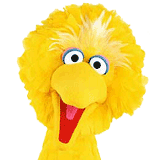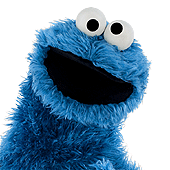minor muppetz
Well-Known Member
- Joined
- Jun 19, 2005
- Messages
- 16,083
- Reaction score
- 2,665
Sometimes I wonder, when a character is suddenly given a name, if the scripts say what existing character it is. Like when Grover was finally given a name, did the script just call him Grover or did it indicate a specific monster puppet? In fact Grover did a number of skits with Kermit where he was clearly the same character despite being unnamed, I wonder if the scripts made it clear it was the same monster as those other ones. Gladys seemed to start out as a generic cow but tended to always have the same kind of voice and personality. And I wonder about the first time Lefty was named Lefty, did the scripts say that the Salesman puppet was used for Lefty or did they just write in two gangsters and they just happened to use that one?
And there's Elmo's first named appearance, did the script say they were to use the Short Red Monster puppet or did it just call for a monster named Elmo and they happened to use the red one?
Seeing examples of titles in scripts or CTW documents, it seems a lot of early scripts had real basic titles (like "Kermit/Monster B Bit"), but based on Muppet Wiki edits, it seems like some scripts had more thought put into their titles (like "Please Take a Number, Sir!" as opposed to something more simple like "Grover the Baker", or "A Clean Sweep" as opposed to something like "Kermit News: Santa Claus II" or "Kermit News: Waiting for Santa", though it's just the clapboard I've seen that lacks any indication of it being a news sketch - no "Kermit News", "News", "Sesame Street News", or anything like that). Titles weren't meant to be seen by people like us, but I wonder if the writers had trouble figuring out titles for certain sketches to put into the scripts. They probably had some form of title reference (as the scripts feature a sketch listing with length, some have first appearances by the sketch titles, and some have production codes). The CTW Archives files "first season show content" is the only thing I know of for sure they had (and did the writers use it for reference or did they just use it to keep track of every use of a segment?), I wonder if they looked through files to find sketches that might not have aired for a while. Man, this kind of thing might need its own thread.
But it seems like when Sesame Workshop uploads classic clips online, there's a little more thought into the titles. Some clips seem to have been retitled on YouTube, like Kermit News: Rupunzel now being listed as "Kermit News: Rupunzel's Rescue" (I'd say give more thought-out titles to the fairy tales that were revisited on Sesame Street News).
And there's Elmo's first named appearance, did the script say they were to use the Short Red Monster puppet or did it just call for a monster named Elmo and they happened to use the red one?
Seeing examples of titles in scripts or CTW documents, it seems a lot of early scripts had real basic titles (like "Kermit/Monster B Bit"), but based on Muppet Wiki edits, it seems like some scripts had more thought put into their titles (like "Please Take a Number, Sir!" as opposed to something more simple like "Grover the Baker", or "A Clean Sweep" as opposed to something like "Kermit News: Santa Claus II" or "Kermit News: Waiting for Santa", though it's just the clapboard I've seen that lacks any indication of it being a news sketch - no "Kermit News", "News", "Sesame Street News", or anything like that). Titles weren't meant to be seen by people like us, but I wonder if the writers had trouble figuring out titles for certain sketches to put into the scripts. They probably had some form of title reference (as the scripts feature a sketch listing with length, some have first appearances by the sketch titles, and some have production codes). The CTW Archives files "first season show content" is the only thing I know of for sure they had (and did the writers use it for reference or did they just use it to keep track of every use of a segment?), I wonder if they looked through files to find sketches that might not have aired for a while. Man, this kind of thing might need its own thread.
But it seems like when Sesame Workshop uploads classic clips online, there's a little more thought into the titles. Some clips seem to have been retitled on YouTube, like Kermit News: Rupunzel now being listed as "Kermit News: Rupunzel's Rescue" (I'd say give more thought-out titles to the fairy tales that were revisited on Sesame Street News).

 Welcome to the Muppet Central Forum!
Welcome to the Muppet Central Forum!.jpg) Christmas Music
Christmas Music Macy's Thanksgiving Parade
Macy's Thanksgiving Parade Sesame Street debuts on Netflix
Sesame Street debuts on Netflix Back to the Rock Season 2
Back to the Rock Season 2 Sam and Friends Book
Sam and Friends Book Jim Henson Idea Man
Jim Henson Idea Man Bear arrives on Disney+
Bear arrives on Disney+